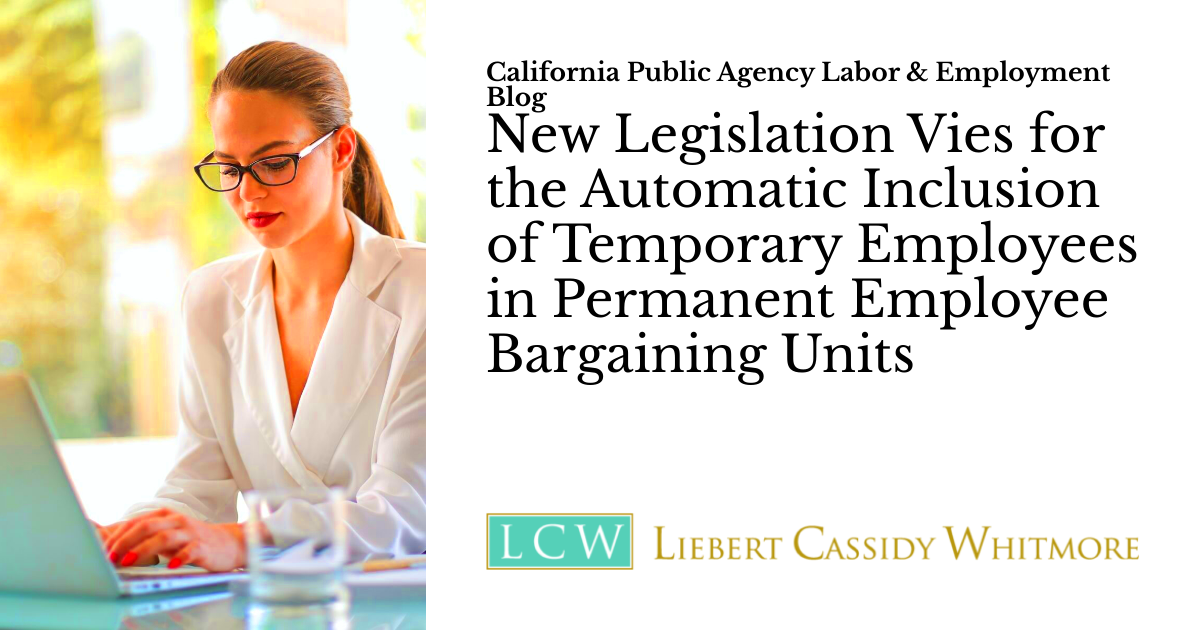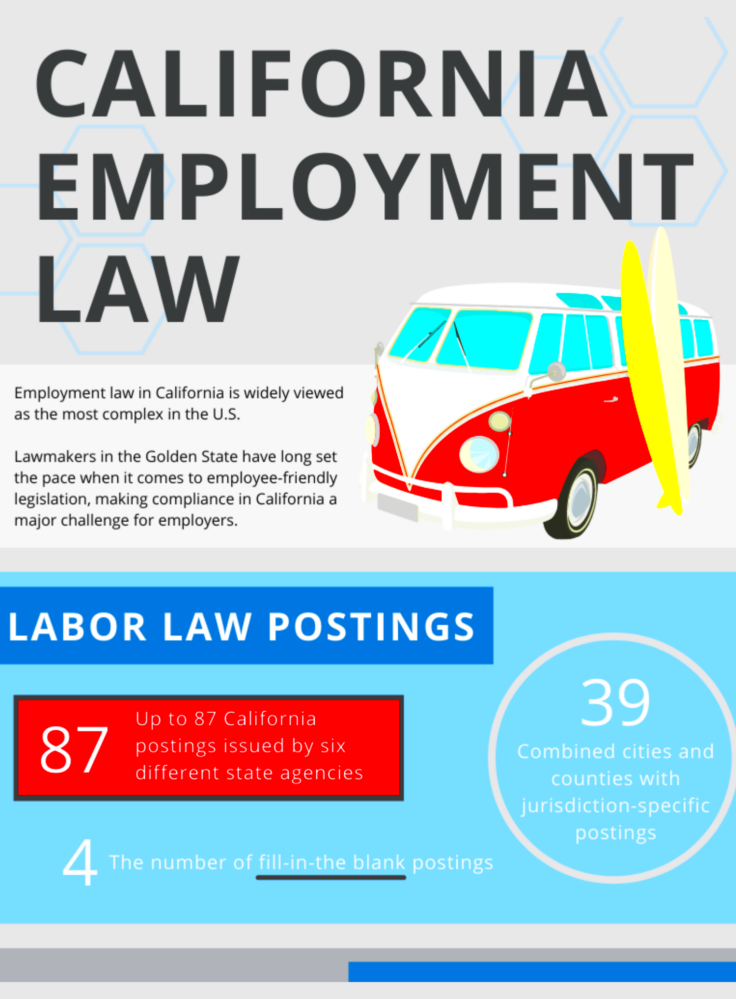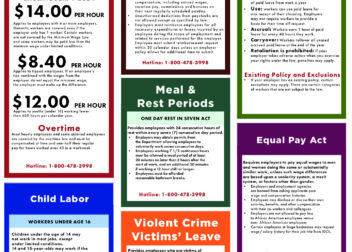Navigating California Temporary Employee Laws
From what I’ve observed businesses often face challenges when it comes to understanding the intricacies of these regulations. They tend to value clear guidelines to steer clear of errors and uphold good relationships with their temporary employees. Likewise employees should be aware of their rights to prevent mistreatment and ensure fair treatment. This guide seeks to provide insights into these regulations simplifying the complexities for all parties involved.
Defining Temporary Employees and Their Roles

Temporary workers are brought on board for a set timeframe or to assist with a specific project. In contrast to full time staff members their employment is meant to continue only until a specific requirement is fulfilled. These positions can range from jobs and project focused roles to brief substitutes for employees who are away.
Here are some important points regarding temporary work:
- Duration: Temporary roles are typically defined by a clear end date or specific project completion.
- Purpose: Temps are often brought in to fill gaps, manage peak periods, or provide specialized skills for a short-term need.
- Employment Type: They might work full-time or part-time but are generally not eligible for the same benefits as permanent employees.
In my view being a worker can provide valuable insights and adaptability although it does bring some uncertainties. Its crucial for both companies and workers to have a clear understanding and mutual agreement on the employment terms to prevent any miscommunication.
Key Legal Requirements for Hiring Temporary Workers

When bringing on board workers in California it’s important to be aware of the legal obligations that govern fair treatment and adherence to labor regulations. Here are a few of the essential considerations.
- Wage and Hour Laws: Temporary workers must be paid at least the state minimum wage and are entitled to overtime pay if they work more than 40 hours in a week.
- Workers’ Compensation: Employers are required to provide workers’ compensation insurance to cover any work-related injuries, regardless of the employee’s status.
- Employment Contracts: It’s advisable to have a written contract outlining the terms of employment, including duration, pay, and job responsibilities.
- Health and Safety: Temporary workers have the same rights to a safe working environment as permanent employees, and employers must comply with California’s health and safety regulations.
Through my experiences in navigating employment regulations I’ve noticed that having contracts and following wage laws can help avoid conflicts and promote a positive workplace dynamic. Taking the time to grasp these obligations is a valuable way to steer clear of issues and create a respectful atmosphere.
Rights and Protections for Temporary Employees
In California temporary workers are granted a set of safeguards to ensure they are treated justly and fairly. Although their position may differ from that of regular employees their entitlements are protected by different labor regulations. It is essential for both workers and employers to be aware of these rights to prevent disputes and ensure adherence to the rules.
Lets take a moment to examine the key rights and safeguards in place for workers on a temporary basis.
- Fair Pay: Temporary employees must receive at least the state minimum wage. They are also entitled to overtime pay if they work more than 8 hours in a day or 40 hours in a week.
- Non-Discrimination: Just like permanent employees, temporary workers are protected against discrimination based on race, gender, age, disability, and other protected characteristics.
- Health and Safety: Employers are required to provide a safe working environment, including necessary training and equipment to prevent workplace injuries.
- Workers’ Compensation: Temporary employees are entitled to workers’ compensation benefits if they are injured on the job, ensuring they receive medical care and compensation for lost wages.
In my view being well informed about these rights can greatly impact temporary workers. During my early career I faced a situation where knowing about these safeguards was vital for fair treatment. Its essential for employers to convey these rights openly to create a workplace.
Comparing Temporary Employees and Permanent Staff
When you look at temporary workers and their full time colleagues there are some differences and similarities to consider. Recognizing these variations can assist both companies and staff in aligning their expectations and duties more efficiently.
Lets take a closer look at some of the differences and resemblances.
| Aspect | Temporary Employees | Permanent Employees |
|---|---|---|
| Employment Duration | Fixed-term or project-based | Ongoing, indefinite |
| Benefits | Generally fewer benefits | Full benefits including health insurance, retirement plans |
| Job Security | Lower job security | Higher job security |
| Legal Protections | Same basic protections, e.g., fair pay, safety | Comprehensive protections including additional rights |
Through my own experiences I have gained insights by working in both temporary and permanent positions. Temporary roles bring flexibility and opportunities but they typically come with limited benefits and reduced job security. Employers should recognize these distinctions and adjust their expectations accordingly.
Common Challenges and Legal Pitfalls
Moving through the world of job opportunities in California can come with its fair share of challenges and potential legal hurdles. Being mindful of these matters is essential to steer clear of costly errors and uphold adherence to labor regulations.
Here are a few obstacles and traps to be mindful of
- Misclassification: One of the biggest issues is misclassifying temporary workers as independent contractors, which can lead to legal trouble and penalties.
- Benefits Entitlement: Temporary employees may not always be aware of their rights to benefits like paid sick leave or health insurance, leading to misunderstandings and dissatisfaction.
- Contractual Ambiguities: Lack of clarity in employment contracts can result in disputes over job responsibilities, pay rates, and employment duration.
- Workplace Safety: Ensuring that temporary workers are provided with the same safety measures as permanent staff can sometimes be overlooked, potentially leading to workplace injuries.
Looking back on my experiences I’ve noticed how these challenges can make work relationships more complicated and result in conflicts. Dealing with these issues in advance by communicating and keeping detailed records can help avoid misunderstandings and keep a positive workplace atmosphere.
Best Practices for Employers
Managing temporary staff can be a fulfilling but demanding endeavor. To create a favorable experience for both the employer and the temp worker it’s crucial to embrace practices that promote equity, transparency and efficiency. Based on my experiences here are some strategies that prove to be effective.
- Clear Job Descriptions: Provide detailed job descriptions to avoid confusion. Clearly outline the roles, responsibilities, and expectations. This not only helps the employee understand their duties but also prevents potential disputes.
- Effective Onboarding: Even though temporary employees are with you for a short time, a proper onboarding process is crucial. Introduce them to your company’s culture, provide necessary training, and ensure they understand workplace safety protocols.
- Regular Communication: Maintain open lines of communication. Regular check-ins can help address any issues promptly and keep the temporary worker engaged and informed about their performance and any changes in their duties.
- Fair Treatment: Treat temporary employees with the same respect and fairness as permanent staff. This includes providing a safe working environment, adhering to wage laws, and offering necessary support.
- Clear Contracts: Ensure that all terms of employment are clearly stated in the contract, including job duration, pay rate, and any other pertinent details. A well-drafted contract helps prevent misunderstandings.
Throughout my professional journey I have witnessed the positive impact of adhering to these principles. When temporary staff members are managed effectively they tend to be more driven and efficient in their work benefiting the entire team. Putting in the effort to implement these strategies proves valuable for fostering a smoother and more productive collaboration.
Resources and Support for Temporary Workers
Temporary workers encounter challenges and having access to the right resources and support can greatly enhance their overall work experience. Luckily there are various tools and services at their disposal to assist temporary employees in understanding their rights and obligations.
Here are some helpful tools and forms of assistance for employees.
- Legal Aid Services: Organizations such as Legal Aid Foundation and local legal aid clinics offer support to temporary workers who face issues like wage disputes or unfair treatment.
- Employment Agencies: Agencies that place temporary workers often provide additional support, including guidance on employment rights and help with contract issues.
- Workplace Safety Resources: Resources from OSHA (Occupational Safety and Health Administration) or California’s Division of Occupational Safety and Health (Cal/OSHA) offer information on maintaining a safe working environment.
- Employee Assistance Programs: Some employers provide access to Employee Assistance Programs (EAPs), which offer confidential counseling and support services.
- Online Forums and Support Groups: Online communities and forums can provide peer support and valuable advice from others in similar situations.
Through my personal experiences, I’ve discovered that tapping into these resources can greatly improve the experience and overall well being of temporary workers. Having a network of support can ease the burden of challenges and empower workers to approach their responsibilities with increased self assurance.
FAQs about Temporary Employee Laws
When it comes to the laws surrounding temporary workers in California there are quite a few questions that come up. By addressing these frequently asked questions we can shed light on concerns and offer valuable insights into the legal framework. Here are some of the queries that are often asked.
- What is the minimum wage for temporary employees in California? Temporary employees must be paid at least the state minimum wage, which is updated periodically. Employers must ensure they are compliant with the current rate.
- Are temporary employees entitled to health benefits? Temporary employees typically do not receive health benefits unless specified in their contract. However, they are entitled to workers’ compensation and certain other benefits.
- Do temporary employees have the right to paid sick leave? In California, temporary employees are generally entitled to paid sick leave if they work at least 30 days within a year. Employers should check specific requirements and regulations.
- How can employers ensure compliance with temporary employment laws? Employers should stay informed about current laws, provide clear contracts, and regularly review their practices. Consulting with legal professionals can also help ensure compliance.
- What should a temporary employee do if they face unfair treatment? If a temporary employee faces unfair treatment, they should document the issue, seek assistance from their employer or HR, and if necessary, consult with legal aid services for further support.
Based on my observations tackling these frequently asked questions can help dispel misconceptions and make sure that employers and employees are aligned. Having information is crucial and being aware of these matters can contribute to smoother and more respectful workplace interactions.
Conclusion and Final Thoughts
Exploring the realm of jobs in California might appear overwhelming at first. However grasping the regulations and optimal strategies can help ease the process and even bring some benefits. Whether it’s being aware of your entitlements and safeguards or adopting practices as an employer having a bit of insight can greatly contribute, to creating a workplace atmosphere.
Looking back on my experiences I’ve witnessed how transparency and equity can turn roles into meaningful chances for personal and professional advancement. When employers invest in educating themselves and their temporary staff they not only steer clear of legal issues but also foster a more committed and enthusiastic team. Similarly temporary workers who are informed about their rights and available resources can navigate their responsibilities with assurance and assertiveness.
In the end whether you’re a boss or a temp worker staying updated and taking initiative are crucial. Approaching the world of temporary jobs with the attitude and resources can lead to a rewarding experience. By adhering to the best practices and tapping into the support systems in place both sides can transform temporary positions into mutually advantageous opportunities. So let’s navigate the challenges with a sprinkle of wisdom and a generous dose of compassion!


